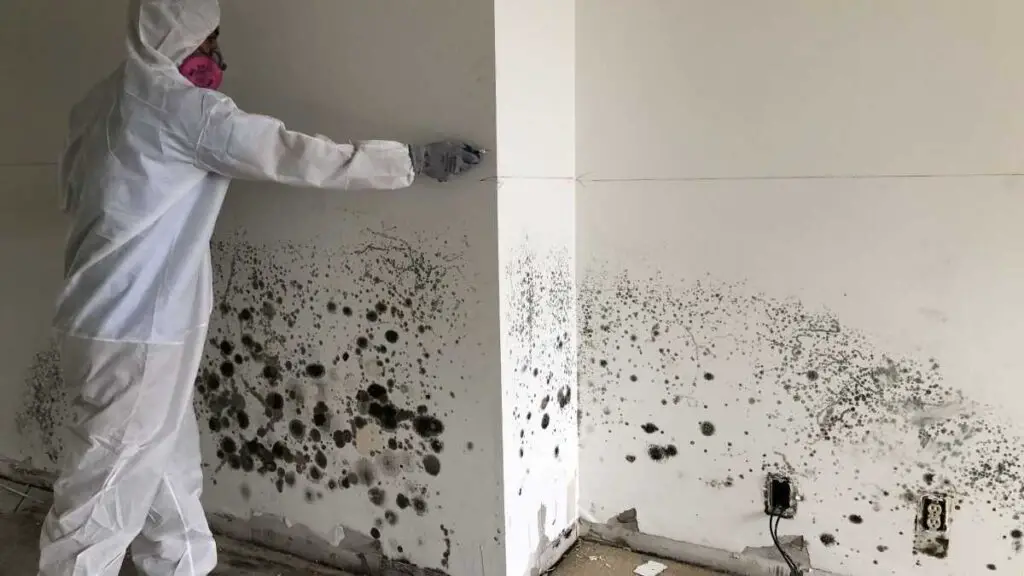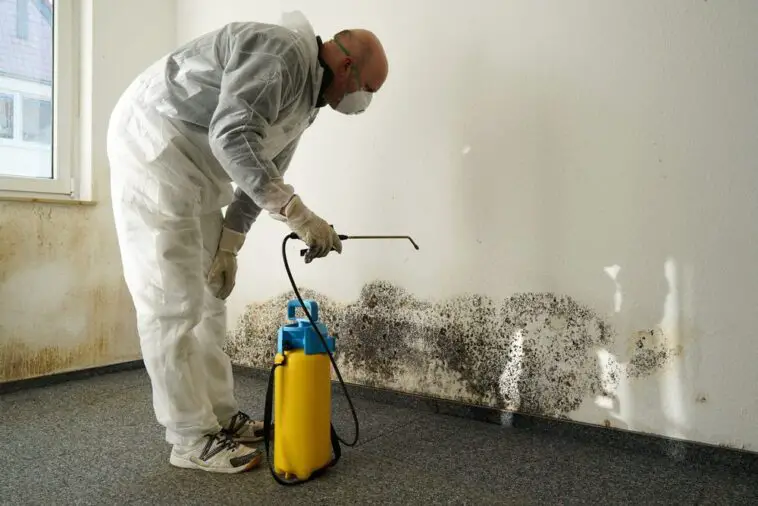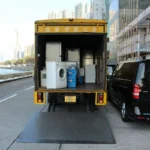You may often be confused about whether mold remediation is just about mold removal. It includes mold removal but is not just confined to where. It involves various other processes, which ensure that mold does not find its way back to the once-affected space.
The mold removal at your home is not just about confining the work to only mold removal; it is indeed more than that. From detecting all the possible sources of mold at your home to implementing proactive preventative measures, your contractors eliminate all kinds of mold and sanitize your home to prevent the rapid spread of mold spores. Moreover, your mold removal experts will also clean the HVAC to avoid lingering mold spores lying along its surfaces.
Even if you spot mold growth on the exterior of your home, remember that it can penetrate deeply. Mold thrives in moist environments with some warmth. By being vigilant and detecting mold early, you can take control of the situation.
This article will equip you with the knowledge of mold removal and the necessary steps to take after detecting mold in your home, empowering you to protect your home and your family.
Signs Showing That Your Home’s Roof Is Damaged
When your roof is damaged, your whole home is compromised with a weakened structure. When you observe any of these signs, you must make sure that you contact roofing contractors to inspect your roof and mend it immediately. Ignoring small signs of roof damage today ultimately means that you will have to deal with significant damage and repetitive expensive repairs in the future. Some signs that demand an intervention from your contractors are:
- Shingles are damaged.
- Granules are missing from your roof.
- Water stains all over your home’s roof showing signs of water damage.
- If you own a damaged roof, it can lead to water leakage. This water can then seep into your home, causing mold to grow. In no time, your roof will weaken and no longer be able to protect you and your family.
Understand the Detailed Process of Mold Remediation
One of your home’s worst enemies is water. Whether the water originates from bursting pipes or flooding, mold will develop within 24 to 48 hours. In no time, you will find mold growth on the walls, ceilings, and floors of your home. In the end, your home will be severely damaged with weakened structures and significant loss to your health as well.
Here is a step-by-step process to help you understand about mold removal in detail:
Step 1: Assessing your mold-affected area
Firstly, you need to inspect your home to understand various kinds of mold contaminations, which you can then take for testing. If mold present on your roof is dangerous, you may need to leave your home to prevent spread. If mold spread is evidently visible on your home roofs, it will be difficult for you to access all the points. In such a scenario, hiring a dependable roof contractor will be more fruitful.
Step 2: Wear protective gear
Your safety should always be your priority. To prevent allergies and constant headaches from mold spread, your roof contractor will treat mold in your home’s roof with the necessary methods to regain its functionality. Make sure that you cut off the main electricity power so that electric lines do not come in contact with water and cause serious damage.
Step 3: Mold removal
Never put your health at risk when dealing with mold. Sometimes, DIY options can work perfectly, but when things go wrong, they can cause more problems than they solve. Some ways of removing mold from your roof are power washing, using a mixture of bleach and water, or using other chemical reagents.
While all of these solutions, and especially power washing, involve cleaning your home’s roof and using powerful nozzle sprays in power washers, you must take special care and attention while working with them. To scrape mold away from your roof, you may be tempted to use heavy pressure on mold in the hope of getting rid of it permanently. However, your home’s roof may be damaged, leading to exposed or broken shingles. Instead of compromising your home’s structural integrity, calling a roof contractor for mold remediation is a better thing to do so that you do not weaken your home further.

Step 4: Clean and sanitize your affected area
After mold has completely been removed from your roof, it’s time to sanitize the surface to decontaminate the surface. Your roofing contractors may either repair or replace your mold-damaged roof and install a functional one to give you peace about no mold growth.
Your waterproofing experts will try to restore your belongings and other appliances so that you can enjoy your home’s originality.
Step 5: Install dehumidifiers
To prevent mold from growing back in the same affected area, your mold remediation and roofing contractors will use a combination of dryers, fans, and air conditioners to dry out your water-affected space. Moreover, adding dehumidifiers will help ensure that humidity is well controlled according to the standards set by the US Environmental Protection Agency, which is within the range of 30 – 50%.
Step 6: Post-mold remediation monitoring
Once your remediation expert is done with the overall process, your next job is to constantly inspect the previously affected areas along with the whole house to make sure that the early signs are well detected in advance. To prevent mold spread all over your home, take immediate action and contact your roofing contractors as soon as possible so that you have no regrets later on.
What Should You Do After Detecting Mold in Your Home?
You will definitely take necessary action when you find mold in any part of your home. But, instead of taking any actions after any damage, you can take some proactive actions to minimize any mold damage in your home, as mentioned below:
- Detecting and fixing possible points of water leakages: After detecting all the entry points, it will be easy for your waterproofing expert to implement remediation works effectively.
- Take photographs of water damage so that you can place them as evidence to your insurance agency.
- Call professionals immediately to prevent mold formation, which can occur due to heavy flooding and no signs of water removal.
- Make sure that you remove your belongings from the water-damaged area.




